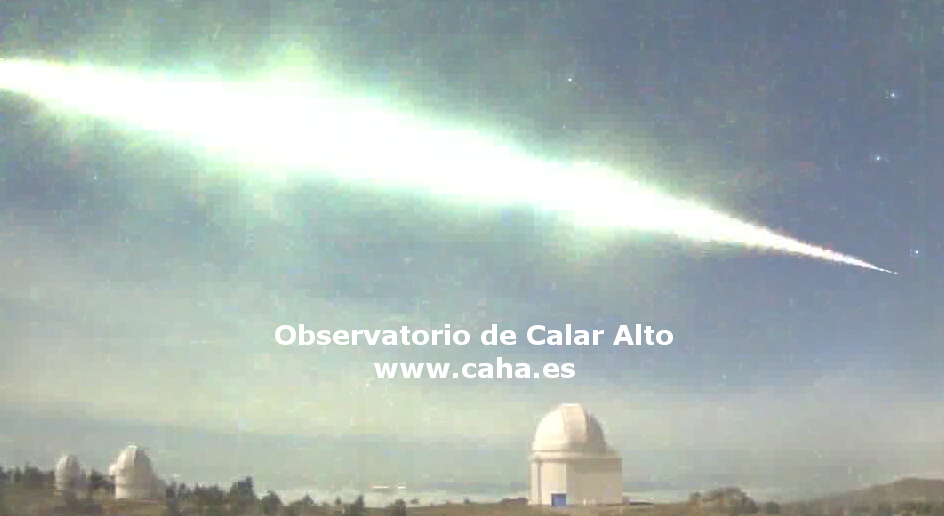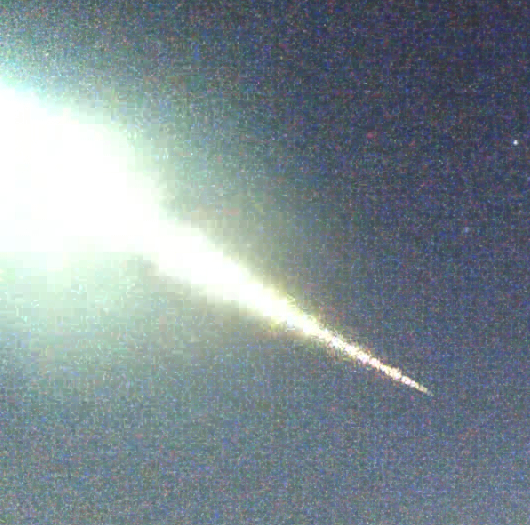
The Spanish National Day has started with a really impressive fireball at 4h50 UT (6h50 Spanish local time)
This spectacular object has been registered with the SMART Project’s detectors operated at Calar Alto (Almería), La Hita (Toledo), Sierra Nevada (Granada), La Sagra (Granada), Huelva, El Aljarafe (Seville) and Seville observatories.
Several external cameras of the Calar Alto Observatory in Almería, also recorded this incredible event.

 Following the preliminary analysis carried out by Professor José María Madiedo (Instituto de Astrofísica de Andalucía IAA-CSIC), and SMART project's PI, this event had an asteroidal origin, and was caused by a rock which impacted against our atmosphere at an estimated speed of 69.000 km/h.
Following the preliminary analysis carried out by Professor José María Madiedo (Instituto de Astrofísica de Andalucía IAA-CSIC), and SMART project's PI, this event had an asteroidal origin, and was caused by a rock which impacted against our atmosphere at an estimated speed of 69.000 km/h.
The luminous part of the phenomena started at an altitude of 81 km above north-west part of Córdoba province (South Spain). Then the object moved eastward with a long trajectory, crossing Córdoba province, passing the south part of Albacete province and then and finished at an altitude of 32 km above Murcia province (South East Spain), close to Mediterranean Sea.
The image on top-left shows the really long path this fireball followed above South Spain.
Below are the videos registered with the external cameras operated at Calar Alto Observatory, in Almería. Unfortunately, the high humidity that existed at the time the fireball occurred had caused water condensation on some of the windows of the boxes where the cameras are housed, preventing a clear vision on some of the cameras. In any case, the images are impressive.
Calar Alto (CAHA) fireball detection station, together with the one at the Observatory of Sierra Nevada (IAA-CSIC) and others placed at different locations in Spain, are part of the S.M.A.R.T. project led by Professor José María Madiedo (IAA) to track that kind of objects. Specifically, Calar Alto (CAHA) station and the one at Sierra Nevada (IAA-CSIC) constitute a collaboration agreement between the IAA researcher José María Madiedo and both institutions.
 English (UK)
English (UK)
